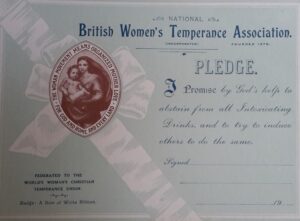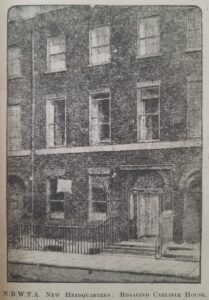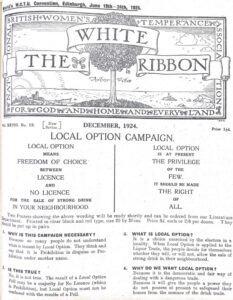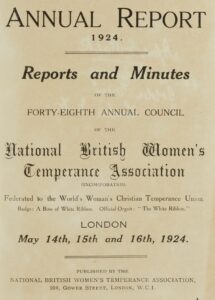 The British Women’s Temperance Association (BWTA) was founded in Newcastle-upon-Tyne in 1876, at the height of the Temperance Movement. The Temperance Movement declined into the twentieth century due to societal changes especially around the First and Second World Wars. In 1894 the BWTA added the word ‘National’ to its title becoming the National British Women’s Temperance Association (NBWTA), until 1926 when there was a further change of name.
The British Women’s Temperance Association (BWTA) was founded in Newcastle-upon-Tyne in 1876, at the height of the Temperance Movement. The Temperance Movement declined into the twentieth century due to societal changes especially around the First and Second World Wars. In 1894 the BWTA added the word ‘National’ to its title becoming the National British Women’s Temperance Association (NBWTA), until 1926 when there was a further change of name.
I thought that it would be interesting to take a look back at the NBWTA,100 years ago. In 1924 during the ‘Roaring Twenties’, the women of the NBWTA were campaigning hard to ‘Double the Membership’ of the association. This was at a time when the country was still recovering from the effects of the First World War and Ramsay MacDonald was the head of the first Labour Government in Britain.
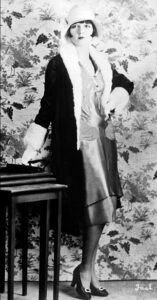 Society was changing, especially for women. Having been employed in factories during the war, women were becoming more independent and their voices were being heard. Women over the age of 30 were given the vote in 1918 and in another four years in 1928, the vote was extended to all women over the age of 21. It was a great time of change in society for the members of the NBWTA and all women. Women were drinking, smoking and driving motor cars and changes in fashion meant shorter hairstyles and shorter dresses.
Society was changing, especially for women. Having been employed in factories during the war, women were becoming more independent and their voices were being heard. Women over the age of 30 were given the vote in 1918 and in another four years in 1928, the vote was extended to all women over the age of 21. It was a great time of change in society for the members of the NBWTA and all women. Women were drinking, smoking and driving motor cars and changes in fashion meant shorter hairstyles and shorter dresses.
Across the Atlantic, Prohibition had been introduced in the United States in 1920. It lasted until 1933 and was a ban on the production and sale of alcohol. This was a hot topic for the NBWTA in 1924 and they were keen to share the benefits of Prohibition. Prominent men and women of America were regularly quoted on the subject within NBWTA literature, especially those who spoke of a reduction in the crime rate through Prohibition legislation.
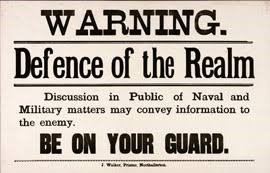 In Britain, the Defence of the Realm Act (DORA) had been introduced in 1914. One of the restrictions introduced was to limit licensing hours, in order to curb excessive drinking through shorter pub opening times. This was to help the war effort and protect the country. These war time restrictions meant that drinking decreased in this period but the NBWTA were still undeterred in their pursuit of further restricting legislation which they believed would bring about a better society. They wanted to eradicate what they saw as the evils of the drink trade and the negative effect this had on family life and society as a whole.
In Britain, the Defence of the Realm Act (DORA) had been introduced in 1914. One of the restrictions introduced was to limit licensing hours, in order to curb excessive drinking through shorter pub opening times. This was to help the war effort and protect the country. These war time restrictions meant that drinking decreased in this period but the NBWTA were still undeterred in their pursuit of further restricting legislation which they believed would bring about a better society. They wanted to eradicate what they saw as the evils of the drink trade and the negative effect this had on family life and society as a whole.
The Licensing Act of 1921 had made further changes to drinking times in public houses, so that hours of sale were increased but the war-time principle of a break in the afternoon and 11am opening were maintained.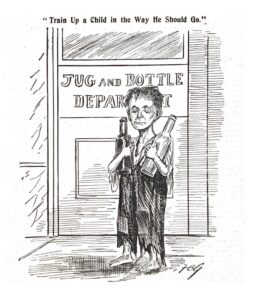
The milestone Intoxicating Liquor Act of 1923, introduced by a woman, MP Lady Nancy Astor, raised the legal age for consuming alcohol in a public house from 14 to 18, as exists today. Before 1923 anyone aged 14 could go into a pub to buy and drink beer and at 16 could also buy spirits. Women could make a difference.
NBWTA in 1924
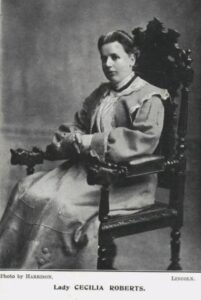 Lady Cecilia Roberts was President of the NBWTA in 1924, having been elected in 1922. She followed in the footsteps of her mother, Rosalind Countess of Carlise who was President from 1903-21. The preamble or objective of this foremost women’s temperance association read –
Lady Cecilia Roberts was President of the NBWTA in 1924, having been elected in 1922. She followed in the footsteps of her mother, Rosalind Countess of Carlise who was President from 1903-21. The preamble or objective of this foremost women’s temperance association read –
‘In the spirit of Christ, and in the love of God and of humanity, we women of this nation, conscious of the great evils and appalled by the dangers of Intemperance, band ourselves together for the promotion of Total Abstinence and the entire extinction of the Liquor Traffic….’.
Members were required to sign the pledge –‘I promise, by God’s help to abstain from all Intoxicating Drinks and to try to induce others to do the same.’
The association was federated to the World Woman’s Christian Temperance Union in America, which was founded by Frances Willard in 1883.
The headquarters office of the association was now 104 Gower Street, London. They had moved to these new premises from Victoria Street in Westminster, in 1923. The house at Gower Street became known as Rosalind Carlisle House in memory of their previous President.
Members
The 1924 Annual Report records 1553 branches across the country, with a total of around 154,405 members. Membership included over 4000 men, who were only allowed to join as ‘Associate’ members. ‘Y’s were the younger women, aged 14-21 years who would move up to join the ‘Seniors’. Children’s departments were also running, including the Little White Ribboners for the youngest.
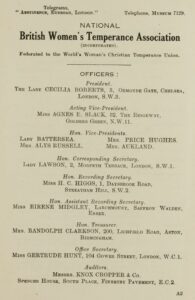 Members who had signed the pledge were encouraged to wear the official badge of the association which was a small white enamelled ribbon. This enabled others to recognise a fellow member and ‘sister’ of the cause.
Members who had signed the pledge were encouraged to wear the official badge of the association which was a small white enamelled ribbon. This enabled others to recognise a fellow member and ‘sister’ of the cause.
Although there was an overall increase on the previous year’s membership, there was still a decrease in membership compared to 10 years previously, when membership was over 164,000.
Members were linked to a local branch which in turn was part of a district Union. Each branch had its own President and Secretary and they were then governed by Officers and Committee Members at an Executive level along with the Association President and Vice Presidents.
Meetings
Branch meetings were taking place locally across the country and over the year the National Executive Committee and Sub-Committee held regular meetings. The Annual Council meeting took place every year and in 1924 was held at the Kingsway Hall in London.
Along with the temperance work of the association, other subjects raised at the Annual Council Meeting, Executive meetings and recorded in the Annual Report of the year included –
- The need for Police Women and their work – the work of the NBWTA was not restricted to temperance work but also societal issues affecting women and girls
- Brewster Sessions – branch members were attending court sessions in order to try to stop further extension of the liquor trade, by attempting to reduce the number of licenses granted
- Women’s Work in National and Local Government – the women of the NBWTA were rejoicing over the General Election in creating a House of Commons with three hundred members who were in favour of the Temperance cause, including Lady Nancy Astor. Increasingly women were holding more positions within Local Administration. They were sure that with many more women in these positions, there would be more opportunities to exercise Temperance principles
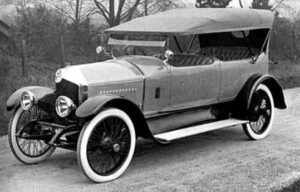 Drunken Motorists – with the advent of the motor car in the 1890’s, by the 1920’s the danger of the drunken motorist was a recognisable threat and the NBWTA were swift to act and campaign to bring this to public knowledge. They made resolutions highlighting the need for stringent legislation. In 1924 they resolved to urge the Government to suspend the license of any person convicted of an offence whilst under the influence of drink and driving.
Drunken Motorists – with the advent of the motor car in the 1890’s, by the 1920’s the danger of the drunken motorist was a recognisable threat and the NBWTA were swift to act and campaign to bring this to public knowledge. They made resolutions highlighting the need for stringent legislation. In 1924 they resolved to urge the Government to suspend the license of any person convicted of an offence whilst under the influence of drink and driving.- Shipments of whisky to the United States – whilst Prohibition was in place in the US the NBWTA were protesting about the proposal of an English Lieutenant-Colonel to ship whisky across the Atlantic for sale outside of American territorial waters, known as ‘Rum Running’
- British Empire Exhibition – members were discussing the idea of hosting an educational stand at this colonial exhibition, which was due to be held at Wembley Park, London
- Betting – the Executive Committee resolved to oppose any suggestion of the Government raising revenue by legalising betting
- Prevention of Sale of Intoxicants to Children – following the 1923 Intoxicating Liquor Act, branches were encouraged to arrange observations of licensed premises to ascertain whether the law regulating the sale of alcohol to over 18’s was being enforced appropriately
- The White Ribbon Magazine – there was an increase reported in the circulation numbers of the official magazine of the NBWTA. The magazine was introduced back in 1883 under the name of the British Women’s Temperance Journal. 230,762 copies were sold in 1924
- The Employment of Barmaids – this department of work was formed in around 1902 when the NBWTA inaugurated a movement to ‘universally memorialise the justices on the evils attending the barmaids’ calling with a view to its ultimate abolition’.
Departments of Work
From its foundation in 1876, the work of the NBWTA increased and evolved over the years and none more so than under the Presidency of Lady Henry Somerset from 1893-1903. Lady Henry conceived a departmental system and widened the scope of work. By 1924 the following departments were running –
- Work amongst Young Women – Y Dept
- Children’s Department
- Little White Ribboners
- Snowdrop Bands
- World’s Temperance Missionary Dept
- Evangelistic
- Scientific Temperance Instruction in Schools
- Department t for the Cure and Care and After Care of Inebriate Women
- Police Court Work
- Dept for the Employment of Women in Drinking Bars
- Prevention of the Sale of Intoxicants to Children and Young People
- Dept for Temperance Refreshments Tents, Coffee Carts etc
- Women’s Work in National and Local Government
- Dept for the Promotion of Public Morals
- Purity and Moral Education
- Health
- The Press
- Work at Brewster Sessions
- Peace, Arbitration, Anti-Militarism and League of Nations
- Organisation
- Literature
- Political
- Suffrage
Finances
NBWTA revenue came through membership and affiliation fees, generous donations and legacies plus interest from investments. Further funds were raised by branches, whilst literature and badges were sold bringing in more revenue. From funds raised in 1924, donations were sent to the London Temperance Hospital, other local hospitals, Dr Barnardo’s Homes, the Independent Order of Good Templar Orphanage and other charities.
The White Ribbon Magazine
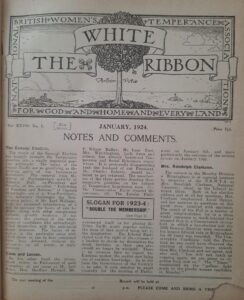 The official magazine of the NBWTA was first circulated in 1883 as the British Women’s Temperance Journal and after several changes of name became The White Ribbon in 1897. It provided temperance news and an overview of the work to its members and others interested in their work. The slogan for the year 1924 was ‘Double the Membership’, which was their ongoing campaign to recruit new members to the association, having seen a decrease in numbers during the previous 10 years.
The official magazine of the NBWTA was first circulated in 1883 as the British Women’s Temperance Journal and after several changes of name became The White Ribbon in 1897. It provided temperance news and an overview of the work to its members and others interested in their work. The slogan for the year 1924 was ‘Double the Membership’, which was their ongoing campaign to recruit new members to the association, having seen a decrease in numbers during the previous 10 years.
Themes from the magazine of this year included –
- The new Labour government and the improved political position in terms of the temperance question, with the return to Parliament of champions of the Temperance cause including Mr Leif Jones and Lady Nancy Astor.
- Prohibition in the United States and ‘Rum Running’ – the liquor treaty with Britain was ratified by the US senate in this year, giving the US authorities the right to search for liquor on British ships within an hour’s sail from their coast
- Drink Driving – the growth of motor traffic and the increase in accidents due to drink driving was seized upon by the NBWTA. The first Act introduced in 1872 made it illegal to be in charge of cattle, horses, carriages and steam engines whilst under the influence of alcohol. It wasn’t until 1925, some years after the first motor cars appeared on Britain’s roads in the late 1890’s, that the Criminal Justice Act outlawed being drunk while in control of any mechanically propelled vehicle in a public place or highway.
- The British Empire Exhibition – volunteers for the NBWTA successfully ran a kiosk at the exhibition held in Wembley for 6 weeks. The kiosk was of great interest to visitors and provided education on the value and positive health benefits of a temperance lifestyle. This included the analysis of food and drinks shown by models and charts. Temperance literature was for sale and distribution. They were also instrumental in providing water fountains for refreshments at the exhibition
- Temperance (Wales) Bill – this Bill defeated in the House of Commons by only 28 votes
- Local Option – the NBWTA consistently campaigned for ‘Local Option’ over the years. This allowed the electorate of a particular district to choose whether licences for the sale of intoxicating liquor should be granted or not in their own area
- Canteen and Refreshment Tents – an NBWTA Tea Room was opened at Cambridge Railway Stations. Railway workers and taxi drivers used this facility which was later led by the NBWTA during the Second World War when soldiers were passing through
- The Barmaid Problem – the NBWTA believed that young women were attracted into work as a barmaid at a very early age and were then led astray into an immoral life. For this reason they campaigned tirelessly to abolish the employment of young women as barmaids, citing many examples of cases of ‘early ruin’
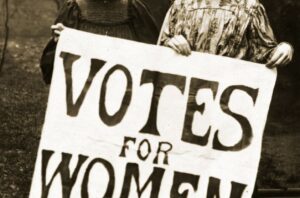
- Votes for Women – the women of the NBWTA were watching closely as a bill was presented to Parliament to amend the Representation of the People Act. This would confer the franchise on women at the age of 21 and upwards and bring the vote for men and women onto an equal footing
- National Temperance Fete – this event was held at Alexandra Palace, London in July 1924
- Temperance Teaching in Schools – the NBWTA passed a resolution to urge the government ‘….to bring in and pass into law a measure enacting that systemic and graded teaching on the….effects of alcohol upon the human body and brain shall be made an integral part of the instruction given to children in all….schools and colleges’
- Commonwealth Temperance Convention was held at Caxton Hall, London in June 1924
- Betting and Gambling – this was another area of concern for the association and came under the ‘Public Morals Department’ of the NBWTA. They considered it to be an evil which had become a craze in all classes of society and they were keen to stem its ‘tide of destruction’ on society
The monthly magazine followed a set format and included –
- Current items of temperance news – such as new government legislation and political news
- Current work of the NBWTA – updates on departmental work and meetings
- Union and Branch Reports
- Housewife’s Column – tips for the home and non-alcoholic recipes
- WWCTU Bulletin Notes – the NBWTA was federated to the WWCTU of America and provided news from the organisation
- Children’s Page by Margaret Baker – with stories and illustrations to teach children about the dangers of alcohol
- Obituaries – of notable members of the association and well known temperance leaders
- Adverts – including non-alcoholic food and drinks and Temperance establishments such as boarding houses and hotels
- Notes from Overseas
Results
From 1914 onwards the NBWTA could see their membership numbers declining year on year. There were many contributing factors in this decline including the advent of World War One and social change. With determined effort following the end of the war, membership numbers began to increase again.
By 1927 they were back to pre-war figures of around 164,000 members. The effort of the ‘Double the Membership’ campaign had a marked impact on the increase in these numbers. Unfortunately, from 1927 the steady decline in membership numbers set in and the Second World War heralded a drastic decrease. Records show that in 1946, there were just over 63,000 members.
However, in 1924 in the midst of the ‘Roaring Twenties’, the women’s determination abounded and 11683 new pledges to abstain from alcohol were made and received by the NBWTA. Across the association they held over 12000 public and members meetings and over 6700 committee meetings. The women of the NBWTA desperately wanted to make a difference to society and to the life of the many families adversely affected by the drink trade.
The NBWTA Annual Report of 1924 speaks of a story of ‘steady hard work and unquenchable enthusiasm, the power of ‘pegging away’ against the indifference which the Temperance Cause has still to conquer.’
‘Misery and Drink have become almost synonymous terms’
A quote from the White Ribbon magazine, 1924

